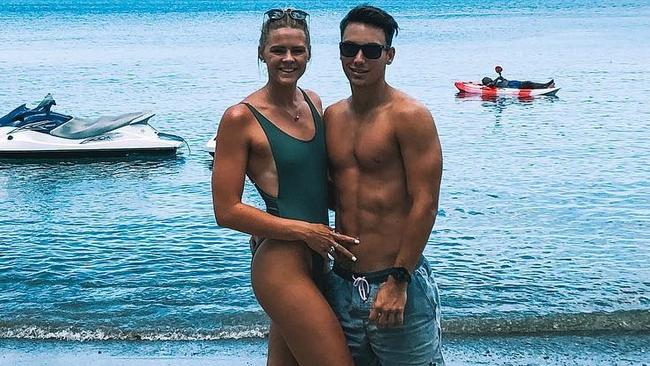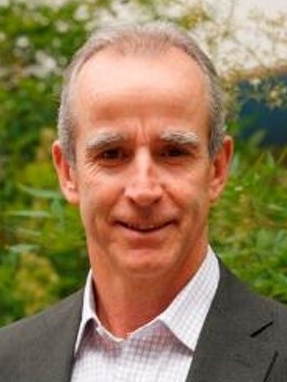Supplement peddlers ‘live in shadows’
A senior sports medico warns athletes to avoid supplements sold “in the shadows” of the market.

Australia’s most senior sports medico has warned athletes in the wake of the Shayna Jack doping scandal to avoid supplements sold “in the shadows” of a poorly regulated market that peddles substances not approved for human consumption and potentially harmful to their health.
Jack is facing a mandatory four-year ban from competition and the likely end of her swimming career unless she can show how a developmental anabolic agent used by gym junkies and power lifters came to be in her body during an Australian team camp in Japan.
David Hughes, the Australian Institute of Sport’s chief medical officer and medical director of the Australian Olympic team, says athletes should not take sports supplements unless they are advised to do so by a qualified sports dietitian or doctor.
MORE: Secrets and lies around Shayna Jack have brutalised swimming
“The key pillars for high-level exercise performance are good nutrition, training well and good sleep,’’ Dr Hughes told The Australian. “Supplements are not an essential part of a high-performance program.
“You can walk into a shop in Australia and buy a sports supplement that has contaminants which can be harmful and, if you are a high-performance athlete, put yourself at risk of an adverse analytical finding.”
Jack, a 20-year-old swimmer who returned to the Australian team after struggling with a debilitating virus, maintains she does not know the source of the banned substance LGD-4033, a chemical compound being trialled by a US biotech company as a potential treatment for people recovering from hip surgery.

Contrary to some reports, the Australian Sports Anti-Doping Authority is not investigating who supplied Jack with the substance.
One explanation hinted at by Jack is that she may have consumed a sports supplement contaminated with it. A month after she returned a positive test while training with the national team in Cairns, she is unable to say where the substance came from.
“My understanding from Shayna is she doesn’t know how she came into contact with the drug,’’ Swimming Australia chief executive Leigh Russell told ABC TV.
Jack’s manager, Phillip Stoneham, has suggested the substance could have come from contaminated meat or mushrooms.
Richard Ings, a former chief executive of Australia’s peak anti-doping body, says these statements are a troubling sign for the swimmer. “The worst thing you can do in this situation is to go out publicly and say ‘I have no idea where this came from’,’’ he said. “When you get to a tribunal, you have got to show definitely where it came from. Hopefully, she has a record of every supplement she has ingested.”
Within the Swimming Australia anti-doping code that will decide Jack’s fate, there is a specific provision covering contaminated products. Under this provision, an athlete can attract a heavily reduced sanction — anywhere from two years down to a mere reprimand — if they can demonstrate they were at no significant fault.
This provision, adopted from the World Anti-Doping Code, was successfully used last month by an American mixed martial arts athlete who tested positive to LGD-4033. UFC fighter Walt Harris was able to return to competition within four months after he provided US anti-doping authorities with the supplement he was taking. Testing showed it contained traces of LGD-4033, despite not listing it as an ingredient.
Jack’s defence is being led by Melbourne sports law expert Paul Horvath, one of Australia’s leading anti-doping lawyers. As a member of the Australian swim team preparing for this month’s world championships in Korea, Jack should have documented any supplement she was taking and declared it to testers.
The Swimming Australia sports supplement policy, developed in response to the Essendon and Cronulla doping scandals, advises athletes that most supplements have little to no health or performance benefits but carry health and doping risks.
It advises them to use brands screened by independent companies that conduct batch testing, to check the list of ingredients against the World Anti-Doping Agency’s list of prohibited substances and to record the brand, supplement name and batch number of anything they consume.
The policy warns that meat products from China and Mexico can be contaminated with the banned substance Clenbuterol.
The Australian is not aware of any case of foodstuffs being contaminated by LGD-4033, a substance detectable by testers up to seven days after consumption.
LGD-4033, also known as Ligandrol and VK5211, is a selective androgen receptor modulator, favoured by body builders as a non-steroidal, anabolic agent. LGD-4033 is promoted as the most potent muscle-building SARM and was originally developed as a drug for muscle-wasting diseases. It is said to increase lean muscle mass, power and stamina.
Advocates of the substance claim it does not have the harmful side-effects of steroids but it has undergone only limited human trials, is not approved by the Therapeutic Goods Administration and has been linked to a heightened risk of liver failure, heart attack and stroke.
All SARMs are listed by the Therapeutic Goods Administration as schedule 4 prescription-only medicines. They are illegal to import and possess without a prescription. They are widely available online. A 30ml bottle of LGD-4033 capsules sells for about $140.
Dr Hughes said that sports supplement companies operated in a regulative grey zone between medicine and food stuffs.
“They are organisations living in the shadows,’’ he said.



To join the conversation, please log in. Don't have an account? Register
Join the conversation, you are commenting as Logout